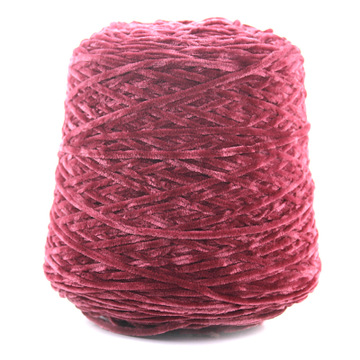Moisture absorption properties of textile fibers
Among common textile fibers, wool, linen, viscose fibers, silk, cotton, etc. have strong moisture absorption capabilities, while synthetic fibers generally have poor moisture absorption capabilities. Among them, the moisture absorption capabilities of vinylon and nylon are slightly better, acrylic fiber is worse, polyester fiber is worse, and polypropylene and chlorinated polyester fibers are almost non hygroscopic.
Textile fibers with moisture absorption function will continuously exchange water vapor with the air when placed in the air, that is, textile fibers will continuously absorb water vapor from the air while also continuously releasing water vapor into the air. The function of textile fibers in absorbing or releasing water vapor is called the hygroscopicity of fibers.

The moisture absorption of textile fibers is one of the important physical functions of textile fibers. The moisture absorption of textile fibers has a certain impact on their shape, scale, weight, physical function, as well as their processing and usage functions. The moisture absorption ability of textile fibers directly affects the comfort level of wearing fabrics. Fibers that absorb moisture easily absorb sweat excreted by the human body, regulate body temperature, relieve stuffiness, and make people feel comfortable. So in commercial trade, fiber function testing, textile processing, and textile selection, attention should be paid to the moisture absorption function of fibers.
Nowadays, synthetic fibers with poor moisture absorption ability are often blended with natural fibers or viscose fibers with strong moisture absorption ability to improve the moisture absorption ability of fabrics. In the moisture absorption function of fibers, in addition to moisture absorption, the water absorption of fiber materials is also closely related to the comfort of wearing fabrics. The water absorption of fibers refers to their ability to absorb liquid water. The water vapor and sweat generated by people during activities are mainly absorbed by the moisture absorption and absorption functions of materials, and then spread outward, making people feel comfortable. Generally speaking, outerwear is mainly soaked by rainwater, so fibers with low water absorption can be selected as outerwear materials; Underwear is mainly soaked by the body's invisible transpiration and sweating, so it is necessary to choose fibers with high moisture absorption and water absorption as underwear materials.
Article source: Fancy Thread Manufacturer
-
05-27
The reason why fabrics containing spandex are prone to yellowing
Spandex is a commonly used fiber variety in our daily lives, characterized by good elasticity, low fineness, high elastic modulus (cracking elongation can reach 400-800), and low specific gravity. Spa
-
04-24
Colored non dyed nylon with synthetic fiber raw material
The current conventional fiber coloring mostly uses yarn dyeing method, which has long process, high loss, high cost, and the product has color difference and low color wash fastness. Yarn is prone to
-
03-26
What are the characteristics of non dyed spandex?
Non dyed spandex has also been widely used in recent years. Non dyed spandex fiber can be blended with fibers such as nylon, polyester, acrylic, cotton, wool, etc., which can give fabrics excellent el
-
02-24
The influence of yarn structure on fabrics
The basic characteristics of yarn include its appearance and shape, twisting characteristics, fiber transfer and distribution characteristics in the yarn, as well as the surface fuzz and internal loos
